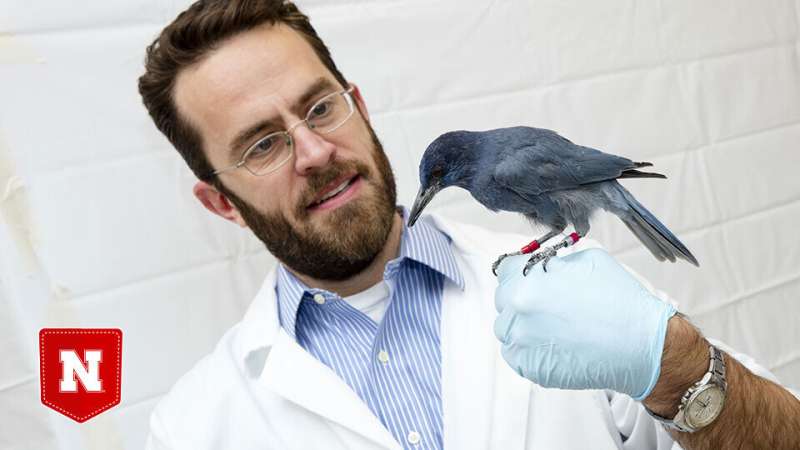Worldwide study finds differences in avian fear of the unknown

Balancing the exploration of unfamiliar stimuli with a fear of the unknown—neophobia—can help animals maximize the benefits of novel opportunities while minimizing the risks of novel threats from toxic foods, potential predators and the like. Understanding neophobia, then, can yield insights into how species adapt to new or changing environments.
But researchers still have much to learn about how neophobia differs across or even within species. The factors that most influence its emergence are ambiguous, too.
Nebraska's Jeffrey Stevens and London Wolff contributed to a 10-laboratory, four-continent study that investigated those questions in 10 bird species—including crows, jays and ravens—from the family known as corvids.
The labs ran experiments in which birds of a given species were presented with a familiar food. Later, the birds were again presented with that food—except this time, the researchers had placed either an unfamiliar object or unfamiliar food nearby. If a bird took substantially more time to touch the familiar food when the unfamiliar object or food was present, the researchers took that as evidence of neophobia.
When analyzing all 10 species together, the study found that the corvids took about four times longer to touch the familiar food when an unfamiliar object accompanied it. But the magnitude of that neophobia differed markedly across species. And the findings were repeatable among individual birds, marking neophobia as a stable behavioral trait.
Overall, the species known for using urban habitats, living in larger flocks and family groups, and caching a variety of foods tended to exhibit less neophobia.
Comparing neophobia in wild vs. captive birds might help clarify where the trait falls on the nature-nurture spectrum.
Ultimately, neophobia findings could refine research on animal cognition and inform efforts to reintroduce species into the wild.
More information: Rachael Miller et al, Socio-ecological correlates of neophobia in corvids, Current Biology (2021). DOI: 10.1016/j.cub.2021.10.045
Journal information: Current Biology
Provided by University of Nebraska-Lincoln

















